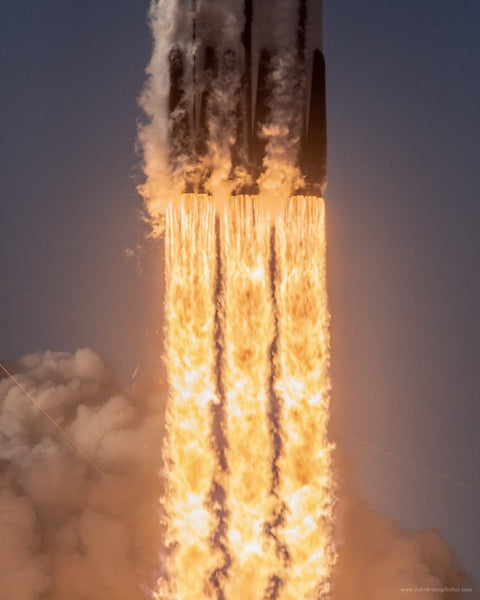
Choose Your Fighter: SpaceX's Starship vs NASA's Saturn V
Share
Welcome to another edition of Ask ARSE, where our followers probe us for answers about the deep unknown.
Today's question is from a follower in our official Australian Space Society about the big, slender tubes that penetrate the atmosphere and venture into the murky womb of space.
"Hi ARSE, I watched the Starship test launch you posted. Thanks for that. I was wondering how the Starship stacks up against the shuttle rockets?" - Garth, 32
Hi Gareth and thank you for inquiring about the future and history. We often think about pointy bois from the past and think about how far we've come.
This is a great question and we can't wait to get started.
So let's go!
1. Time

The most obvious difference is the era they exist in. For Saturn V, it was the 1960s and NASA using subcontractors with the available technology at the time.
Starship has only begun its potential era in space exploration. We'd say it hasn't 'found its feet yet' because it literally hasn't landed without crashing yet, but we won't. Because that pun is too easy.
2. Fuel

The Saturn V rockets burned a fuel called Kerolox - a hybrid of liquid oxygen and kerosene - during the first launch stage within our atmosphere. For the second and third launch stages, a hybrid of liquid hydrogen and liquid oxygen - called Hydrolox - is used in space.
SpaceX's Starship has an ace-in-the-hole; Methalox, a mix of liquid methane and liquid oxygen. The unique feature of Methalox is it burns in both first and second stages without switching fuel types. Plus, there is no third stage needed with SpaceX tech.
This simplifies the launch process two-fold: only one fuel type is needed and only two stages to journey into space.
“There is no other rocket engine capable of producing as much energy out of liquid methane and liquid oxygen as the Raptor engine,” says Tim Dodd, an industry expert who runs the popular Everyday Astronaut YouTube channel. “And making it more reusable with little to no refurbishment is the idea. That’s definitely going to help their business case if they can just fly over and over.”
3. Reusability

The final bonus to using Methalox is reusability. As it stands, Starships first and second stages will be 100% reusable because both the first and second stages can be recovered and reused. Current projections say Starship can launch up to 1,000 times using Methalox. But we'll reserve judgment until we see for ourselves.
Shuttles from the mid-20th century were expendable, even though NASA did propose to recover the first stage.
4. Power

The Saturn V rocket is still considered one of the most powerful rockets ever with approximately 3.4 million kg of thrust.
Impressive, but how does Starship potentially stack up?
If all goes to plan, Starships will be more than twice Saturn's by packing around 7.3 million kg of thrust! And that's just on its first stage. This number is with the projected maximum of 37 engines. However, even with the minimum number of engines to get to orbit (24), Starship will still be more powerful than the Saturn V.
5. Size

With both spacecraft side by side in full-stack (all stages applied like a launch) Starship towers over all rivals, including the Saturn V. If true, and Starship resembles the diagram above when complete, it will be the tallest rocket in the world at full-stack.

6. Manufacture

As mentioned in point number 1, Saturn V was built by various companies under a subcontractor agreement to NASA.
The following is a list of contractors who worked on various Saturn missions:
Boeing built the first stage rocket on S-IC
North American Aviation built the second on S-II
Douglas Aircraft Company the third on S-IVB
Rocketdyne built the F1 first stage engine & J2 second & third stage engines.
Where Starship differs?
It is thoroughly a SpaceX venture.
All of the major components of Starship - from the first and second stage to the engines - are designed, developed, and manufactured by SpaceX itself.
Even NASA has outsourced to SpaceX as they have historically done. With the list of subcontractors above, we can see how one lone bill could be appealing.
Thanks for joining us in another edition of Ask ARSE.
Share with a friend to help us elevate Aussie space!
#Space_Aus




